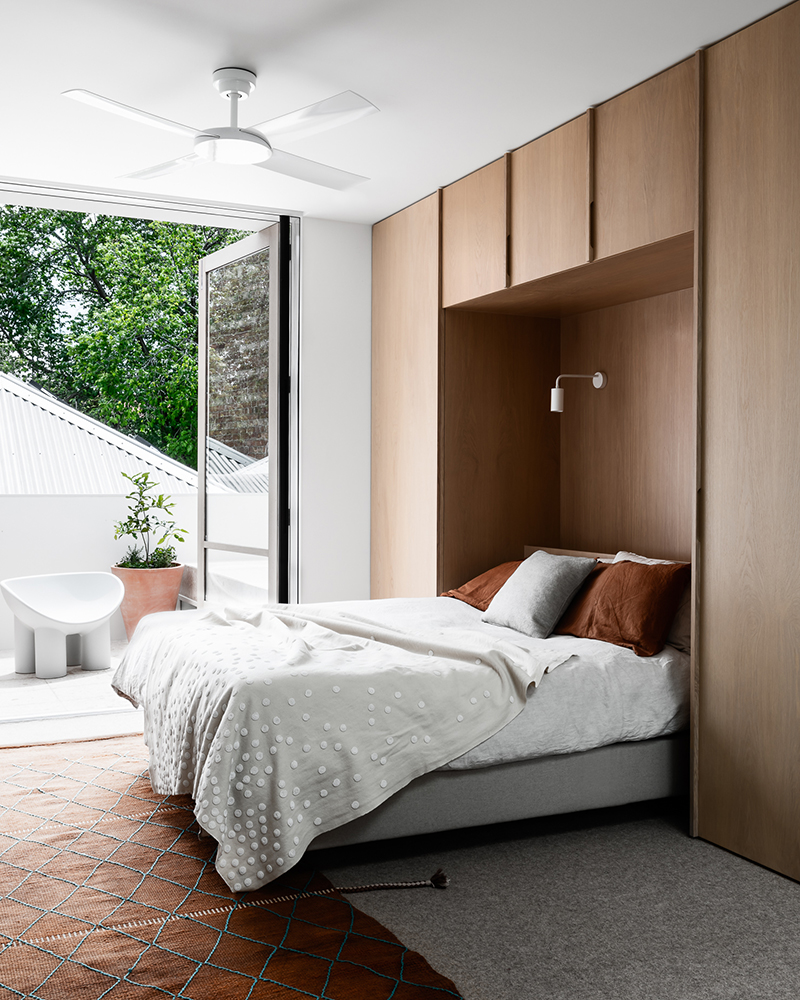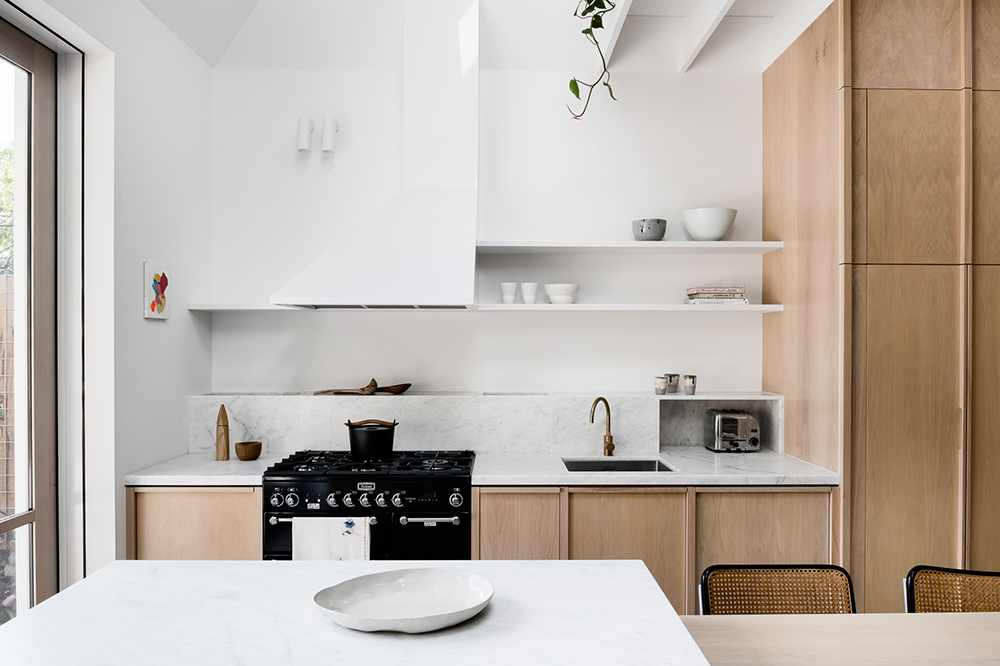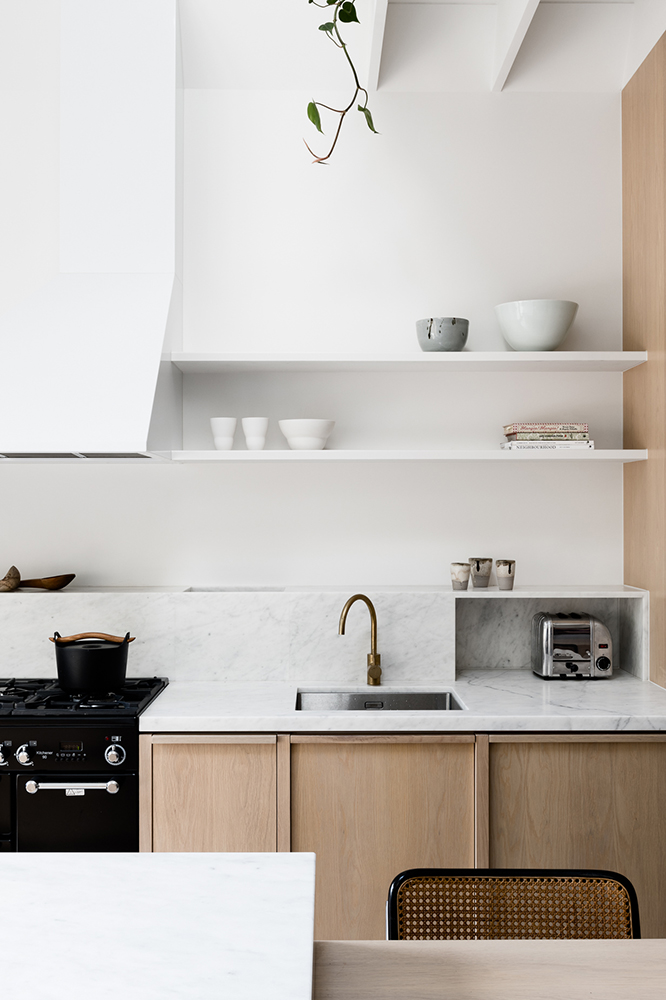
Timeless Approach to Materiality - Storybook House by Folk Architects
Responding to a nuanced brief for contemporary living, Folk Architects’ Storybook House is a proposition of extending and renovating an existing single-fronted Victorian terrace through a classic and timeless approach to materiality.
Situated within Melbourne’s inner-north, Storybook House sees an extension on small site evolve from behind the contemporary and timeless lens of its designers. Folk Architects, together with landscape architects Bush Projects and builder Moon Building Group, have taken an existing single-fronted Victorian terrace and breathed a sense of new life. Within the existing footprint, a series of multi-functional spaces are carved out, creating a sense of openness and connection.
Throughout both the extension and the existing, the openings are deliberate and strategically enable curated vistas beyond the built form to the landscape and open garden spaces beyond. A series of internal courtyards and a roof garden have been implemented in the additional works, and the proximity to the adjacent park is considered, and maximised through openings directed toward and encompassing them. These interventions allow not only for the visual connection, but also for passive ventilation and access to natural sunlight and controlled heat and solar gains.
The client’s brief included the anticipated traditional requirements of restoring and renovating a Victorian period home. Core to this was the opening and connecting of key living spaces, additional and more strategic bathroom amenity and increased access to natural light. Spatially there were no surprises, and through further consultation, additional elements were added to the brief. Both occupants wanted to be able to express themselves in nuanced ways, resulting in specific zoning to be implemented throughout. Sustainable and environmentally-conscious responses were considered and the integration of a sense of wellness within the internal spaces and materiality that spoke to that was key.
Named after the 1920s American homes called the Storybook Style, the Storybook House was inspired by the non-conventional individual formality created, and the fusion of both art and architecture during that period. Stemming from the personalities of the clients, this coming together of opposites was at the core of the design concept. Also referencing the efficiency of Japanese style inner-urban dwelling, every surface and plane internally is utilised in some way, either through storage or some element of support amenity.
Although situated on a size-constrained site and sitting within its existing Victorian-era core structure, Storybook House utilises its classic and muted materiality palette to create a sense of clarity and increased perceived volume. The tone and texture were selected to speak respectfully to its neighbouring context, with formal qualities referencing a familiar and welcomed vocabulary.































